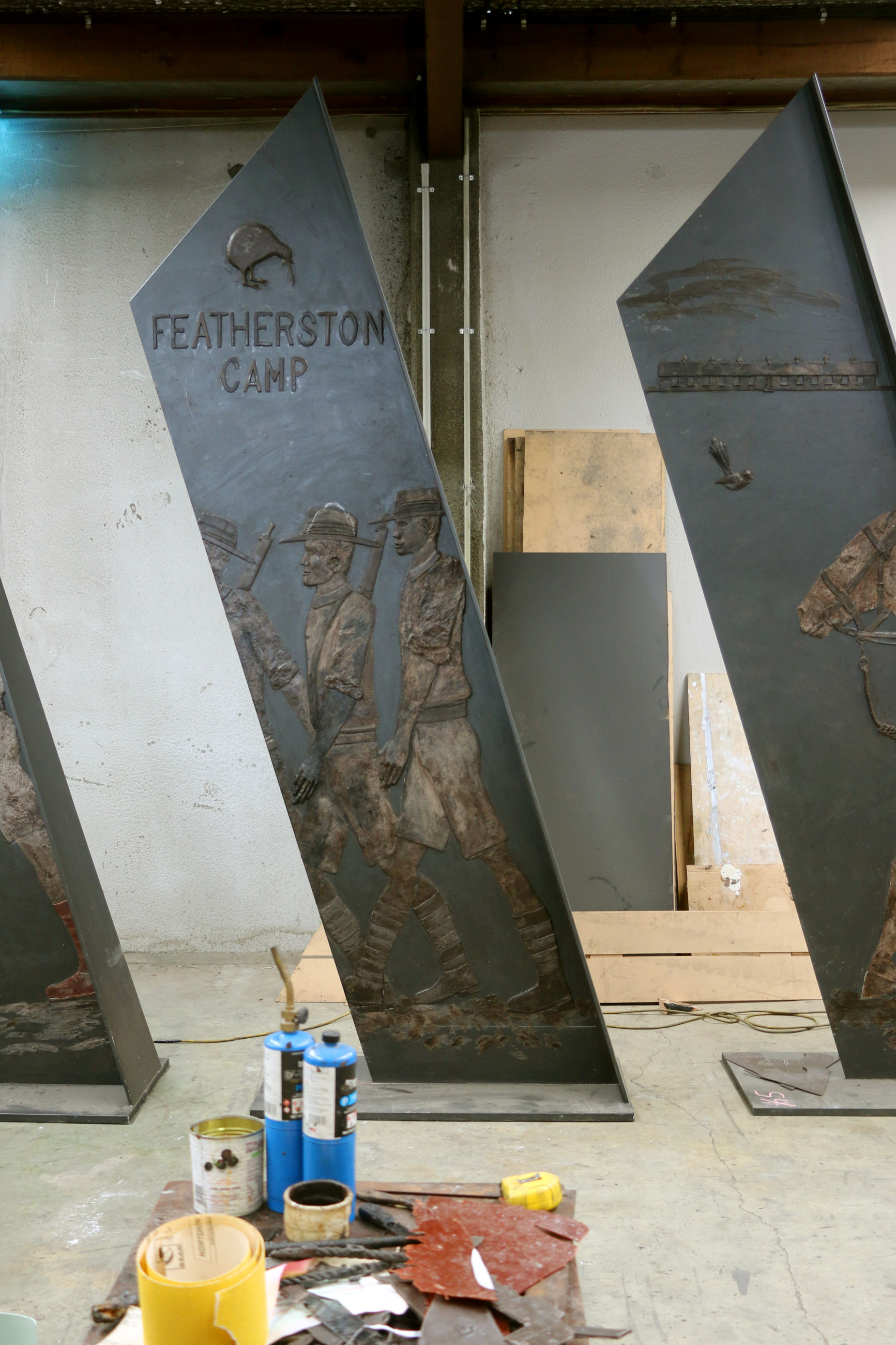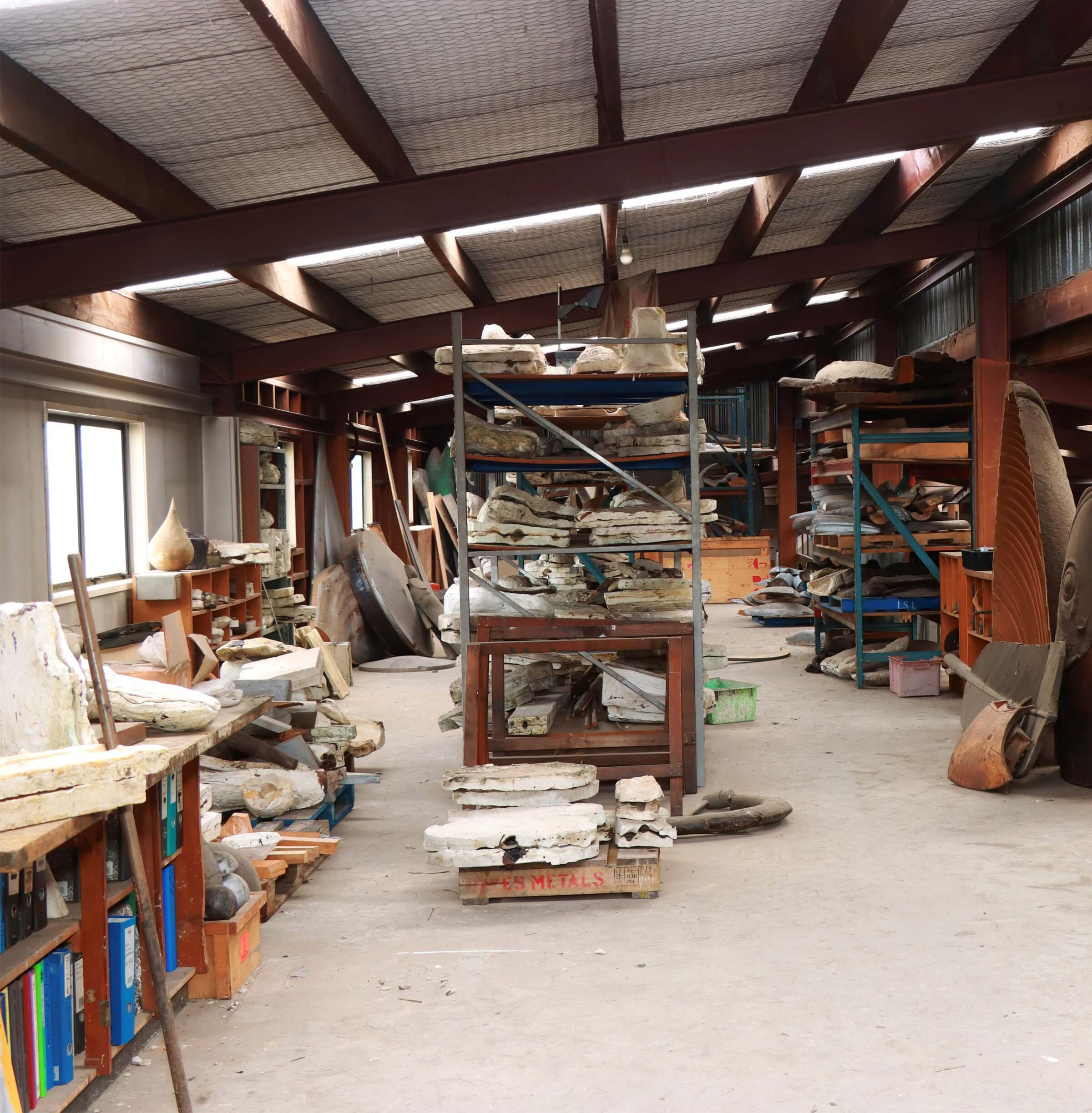2018 Featherston Stand
2018 Featherston Stand
Featherston might be a small town in New Zealand, but its historic significance is gigantic in terms of the war effort. In World War 1 it became the site of the largest military training camp in the country, Featherston Military Camp.
61 Fitzherbert Street, Featherston
Commentary
Featherston might be a small town in New Zealand, but its historic significance is gigantic in terms of the war effort. In World War I it became the site of the largest military training camp in the country, Featherston Military Camp.
In 2014 a group of people from Featherston approached Dibble, wanting to commission a sister piece to Southern Stand, the New Zealand Memorial in London.
Fundraising for the sculpture was a big task, and it took some three years for the group to raise the money required.
The design of the sculpture for Featherston is deceptively simple as a structure: nine flat pillars mounted upright on a slight lean. The lean of each pillar suggests the angle at which a soldier might march when pushing forward into a headwind or up a hill slope (both in abundance on the Remutaka Hill, where the soldiers marched after finishing their training).
Information about the former military camp is spread across the pillars on one side. On the other side, facing the road, is a scene of the soldiers on their march, horses a notable part of the assembly. The soldiers depicted are recognizably Kiwi, very different in appearance from their manicured English counterparts. Most were farm boys in a conglomerate uniform, their faces intentionally portrayed on the sculpture as rugged and unique.
Lighting strips are connected to the back of each pillar, so that at night it appears as if the ghosts of the soldiers are still marching towards the Remutaka Hill (being the direction toward where the memorial points).
In 2018 the completed memorial was formally opened, on the day before the 100th anniversary of the Armistice of 11 November 1918.

